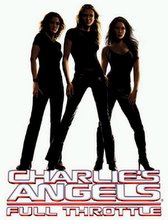Effects of gaze
Gazing and seeing someone gaze upon another provides us with a lot of information about our relationship to the subjects, or the relationships between the subjects upon whom we gaze, or the situation in which the subjects are doing the gazing.
The mutuality of the gaze can reflect power structure, or the nature of a relationship between the subjects, as proposed by Catherine Lutz and Jane Collins, where this "tell[s] us who has the right and/or need to look at whom".
Gazing can often reflect emotion without speech - in Western culture, continued staring upon another can be quite unsettling upon the subject.
Although it may appear that "gaze" is merely looking at, Jonathan Schroeder tells us that "it signifies a psychological relationship of power, in which the gazer is superior to the object of the gaze". The gaze characterizes and displays the relationships between the subjects by looking.
This idea forms a basis of feminist analysis of texts.
Gaze and feminist theory
The gaze is used in feminist theory as a means to demonstrate power asymmetries by what is termed male gaze, whereby a man gazes at a woman. Such feminist theorists posit that since it is almost always the female who is being gazed upon by the male, the man exhibits power over the woman.
This form of gaze can be the sexual gaze by a man towards a woman (so called "making a pass"), or the gazing of an image of a woman in some text or in the media. Laura Mulvey identifies the action of 'possessing' a gaze as being an intrinsically male (the "male gaze"), and identifies the action of being gazed upon with the female. This relates to binaries of male/active, female/passive.
This idea of power relationships within the gaze can be continued to analyse gendered power relationships in the depictions of women in advertising. Some advertising presents women in a sexual manner, and it is argued that this degrades women because of the power that the gaze provides for heterosexual men viewing these advertisements. Furthermore, Erving Goffman in Gender Advertisements describes that in his study the placement of men was higher than that of women in an advertisement. This positioning forces the gaze asymmetrically, the male must look down to the woman, and the female up to the man.
Responses to "male gaze"
Male gaze in relation to feminist theory presents asymmetrical gaze as a means of exhibiting an unequal power relationship; that is, the male imposes an unwanted gaze upon the female. However, this may not necessarily be the case; many societies have women who enjoy being gazed upon, models and beauty pageants in Western society for example seem to welcome the male gaze. Some second-wave feminist viewpoints would argue whether these women are actually willing, noting that they may be merely seeking to conform to the hegemonic norms constructed to the benefit of male interests that further underline the power of the male gaze. Evolutionary biological explanations for the male gaze also exist.
The question of whether a female gaze exists in contrast to the male one arises naturally in considering the male gaze. Mulvey, the originator of the phrase "male gaze", argues that "the male figure cannot bear the burden of sexual objectification. Man is reluctant to gaze...". Nalini Paul describes Wide Sargasso Sea, where the character Antoinette views Rochester and places a garland upon him to appear as a hero, and "Rochester does not feel comfortable with having this role enforced upon him; thus he rejects it by removing the garland and crushing the flowers."
In the perspective of male gaze as merely possessing a gaze, the position of a female possessing the gaze is then the female assuming the male gaze. Eva-Maria Jacobsson supports this by describing a "female gaze" as "a mere cross identification with masculinity".
However, disregarding the viewpoint of gendered possession of gaze as proposed by Mulvey above, there is evidence to support a view of a female gaze - at least as an objectification of men - in texts such as advertisements and teenage magazines. The view that men are somehow reluctant to be gazed upon was also not necessarily supported, for example, at an exhibition called The Female Gaze, where female artists studied the male form. Therese Mulligan mentioned "[t]o get these men who had leered at her on the street to strike these poses was amazing. And you could tell that they loved being looked at by her. These guys aren't attractive, but they sure think they are."
The gaze can also be directed toward members of the same gender for several reasons, not all of which are sexual, such as in comparison of body image or in clothing.
Friday, October 20, 2006
Subscribe to:
Post Comments (Atom)

No comments:
Post a Comment